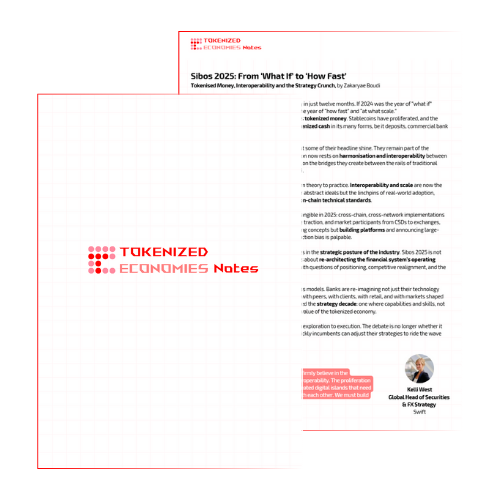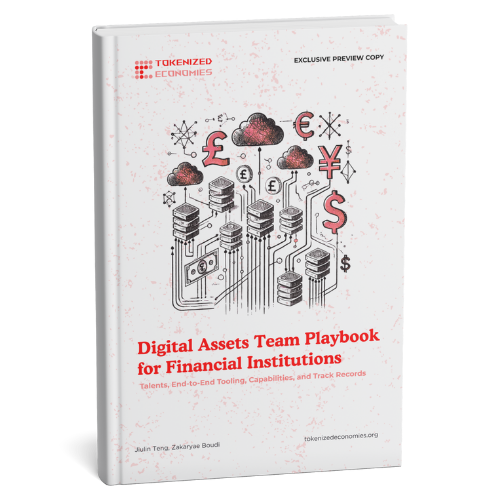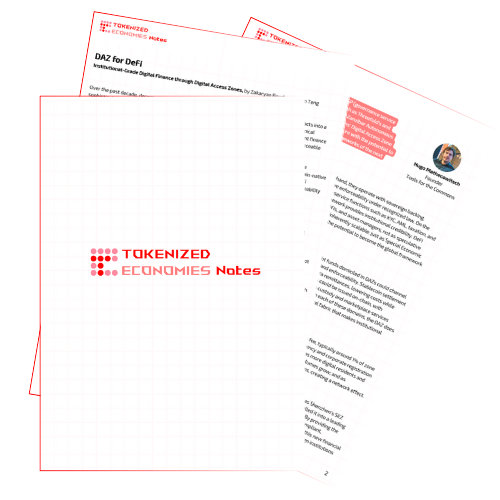The Imperative of Integrating International Financial Standards in Tokenization Protocols

Bridging the Gap: Integrating International Financial Standards into Tokenization
As digital assets continue their march toward the financial mainstream, one challenge remains unresolved at the heart of the ecosystem: how to align the disruptive potential of tokenization with the regulatory and operational structures that underpin global finance.
In our latest report, “Integrating International Financial Standards in Tokenization Protocols,” the Tokenized Economies Institute outlines both the imperative and the method for building this bridge. Co-authored with the ReTech Center of École des Ponts Business School and driven by FeverTokens’ package-oriented smart contract infrastructure, the report presents a pragmatic roadmap for unifying compliance, security, and composability in the age of tokenized economies.
Why Standards Matter in the Tokenization Age
As the tokenization of real-world assets accelerates—whether debt instruments, carbon credits, or tokenized cash equivalents—the absence of embedded regulatory standards risks holding back innovation. Without consistent frameworks, digital asset markets remain fragmented, overly complex, and difficult to scale.
This report makes a simple but critical case: embedding international financial standards into tokenization protocols is not a compliance checkbox—it is a foundation for interoperability, trust, and long-term growth.
- Clarity empowers innovators to build without second-guessing regulatory alignment.
- Security is strengthened through standardized lifecycle management and smart contract design.
- Liquidity and market participation increase as investors gain confidence in asset structures and governance.
This integration is not only a safeguard against regulatory friction—it is a strategic unlock for the next wave of tokenized finance.
A Smart Contract Infrastructure Built for Integration
At the heart of this initiative is the FeverTokens Package-Oriented Framework—a modular smart contract architecture designed to support standards-based interoperability at scale.
Inspired by best practices in software development, the framework allows smart contracts to be broken down into distinct, upgradable modules. This enables:
- Functional scalability: Developers can update features without rewriting the entire system.
- Jurisdictional flexibility: Modules can be swapped to adapt to diverse governance and compliance rules.
- Collaborative development: Standard-setting bodies, regulators, and developers can co-create reusable modules.
In short, the framework turns standards into plug-and-play components of financial infrastructure—creating a unified environment where innovation and regulation no longer collide.
Standards in Focus: ICMA, ISDA, ACTUS
The report identifies key international standards suitable for integration:
- ICMA’s Bond Data Taxonomy helps structure asset metadata and lifecycle terms
- ISDA’s Common Domain Model (CDM) ensures consistency in derivatives lifecycle events
- ACTUS standards enable standardized cash flow modeling
Through open-source and closed-source implementations, these standards can be progressively embedded as packages on EVM-compatible blockchains—ensuring security, interoperability, and regulatory alignment across decentralized systems.
Toward a Global Collaboration
The Tokenized Economies Institute and FeverTokens are actively engaging standard-setting organizations and regulatory bodies to participate in this transformation. By contributing directly to the development of standards-compliant smart contract modules, these institutions can guide the industry toward maturity—without sacrificing innovation.
This is not a vision of proprietary dominance. It is a call for shared infrastructure, built on open frameworks, that reflect both the technological possibilities of tokenization and the regulatory responsibilities of modern finance.
Conclusion
Tokenization is poised to redefine how assets are issued, traded, and governed. But for it to scale sustainably, we must speak a common language—one grounded in the rules that global markets already trust.
By integrating financial standards directly into tokenization protocols, we turn compliance into a catalyst. We align innovation with oversight. And we pave the way for tokenized economies that are not only possible—but scalable, secure, and real.





